What Is Warehouse Automation?
Warehouse automation leverages technology and modern equipment to streamline warehouse operations. It improves efficiency. It allows for a business to expand its operations and supply chain activities and productivity.
The warehouse automation process will utilize RFID, drones, conveyor belts, robots, AGVs, and artificial intelligence. This post discusses warehouse automation methodologies. It explains how to install automated enhancements to meet critical business needs.
The future of warehouses lies in automation due to technological advancement. Especially in the warehouse space, modern technology is advancing quickly.
Warehouse automation has a key benefit, companies can get a greater return on investment. It also leads to cost savings in the long run.
Automated Warehouse Systems and Equipment For The Future
Technological advancements have helped us progress more efficiently in many areas of our daily lives. It allows us to progress in our personal lives and businesses by leveraging leading technology. Below we have categorized automated warehouse solutions according to automated warehouse technology. We will guide you to a path of success for you and your customers.
Automated Storage and Retrieval Technology
Automated storage and retrieval frameworks are commonly referred to as AS/RS. You can use warehouse automation solutions to benefit your business. Yet, it requires capital to invest in an automated warehouse system. These solutions can work for you and save costs long term.
AS/RS are frameworks that leverage robotics and computers to move products in a warehouse. They follow a set of pre-programmed functions that can be adapted to your business. They can also be beneficial to your inventory management strategy. These warehouse automation systems can provide a greater deal of accuracy and improve your supply chain functions.
These technologies can streamline the loading and unloading of items in a warehouse. The process will be efficient and smooth as long as products are stored in the right places. This will enhance warehouse operations and productivity.
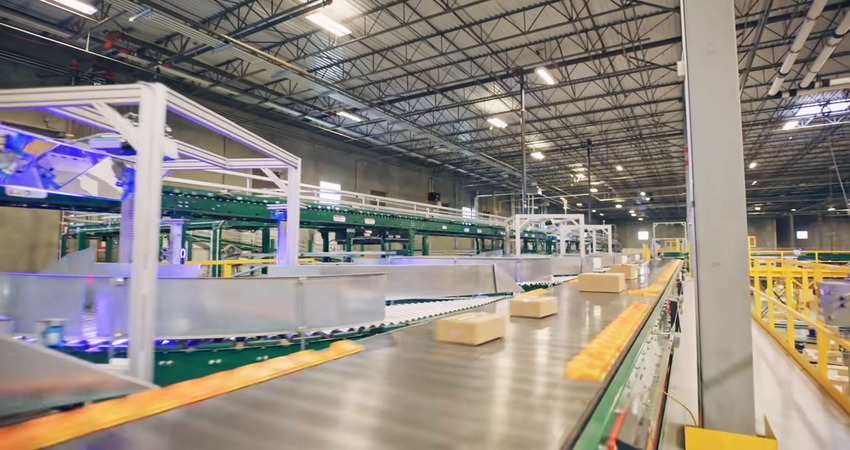
Automated Conveyor Solutions
Conveyor solutions are usually automated. They move items or goods within the warehouse. Many industries use functional conveyor solutions for the precise movement of goods.
These conveyors are commonly found in warehouse settings. Could we talk about the primary makeup of these automated conveyor solutions?
Rollers Or Conveyor Belts
These are the most tangible and integral parts of this conveyor mechanism. The mechanisms in the warehouse will be made of rubber, metal, or plastic. They will have a flat surface to move products, materials, or goods continuously.
Propulsion Mechanism
This propulsion mechanism is often called a drive mechanism. It leverages the power of rollers or conveyor belts. This allows the easy movement of goods.
The roller can be powered by a motor or hydraulic mechanism. Someautomatedwarehouseerollerrsystemm c use gas-powered or air-compression solutions.
Beds Or Conveyor Frames
These frames offer a solid structural framework for the conveyor mechanism. They provide support for the conveyor belt and are generally made from steel or metal.
They also can support heavy goods and products. These conveyor frames can aid product movement inside the warehouse.
Rollers and Idlers
These items mainly support the conveyor belt for moving products. Idlers are stationary parts that provide stability to the conveyor. The rollers assist in moving items on the conveyor.
Conveyor Management
The automated conveyor management apparatus will control transportation operations in real-time or through pre-programming. These mechanisms can be simple with simple interfaces or complex manual controls.
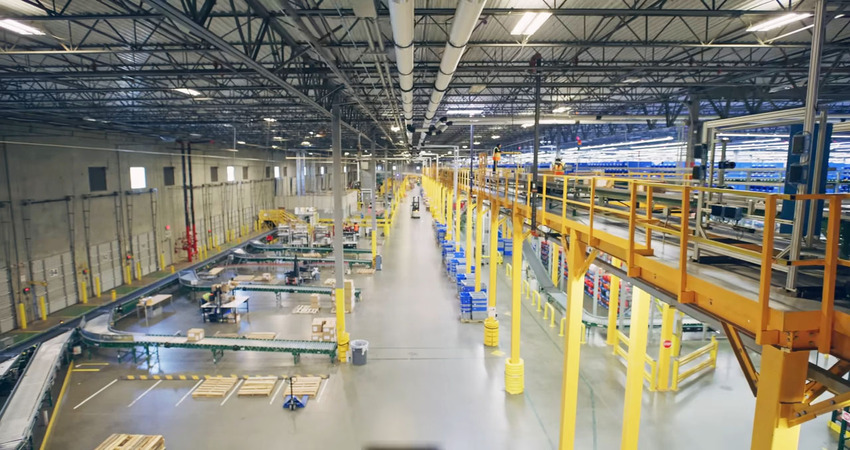
They use high-tech technology solutions with specialized software and sensors. These are called PLCs (programmable logical controllers). They create an advanced environment for effective use of this solution.
These mechanisms have benefits for warehouse goods. They can transport items, operate continuously, control speed, and direct movement.
Robotic Picking Systems
These platforms are very advanced and sophisticated. They use robotics to pick and place products in a warehouse. The process is pre-programmed.
They are used in different industries. They can function without human intervention. These machines can perform tasks efficiently and effectively with programming. These platforms need regular maintenance scheduling for optimal performance.
Components Of Robotic Picking
Robotic Arms
This is the key component of robotic picking solutions. The mechanical arms mimic the human arm and have joints.
They copy the actual movement of a human arm. This allows the robotic arm to hold. maneuver or manipulate a product or good for them to pick and pack as necessitated.
End Effectors
The tools are designed to fit onto a robotic arm. They enhance the arm by enabling it to grasp, suction, lift, and release objects.
The tools are used based on the warehouse picking needs. They are also completely customizable according to the needs of your warehouse.
Optical Inspection
This technology uses advanced computer vision with image recognition and cameras. It identifies the shape, position, weight, and density of objects. It grants you accurate data for the robotic picking and packing of goods.
Transducers and Sensors
These sensors furnish data for the robotic facility to calculate factors. The data helps the robotic arm adjust its grip when picking objects.
They will control how a robotic arm interacts with other elements. The control can adapt to various picking strategies based on object classification.
Operating Software
This can often be described as the mainframe of the robotic picking configuration. The device will control the automated picking mechanism saving time and effort.
It supplies the pre-programmed blueprint and dictates how the mechanism should function. It uses different parameters to achieve the desired results based on your needs.
Robotic picking solutions have several common advantages. These include efficient stock, storage handling, and control.
They also offer ultra-precise efficiency, versatility, and fast processing speed. Additionally, these warehouse automation solutions reduce errors in picking and packing. They can be instrumental when shipping items as well.
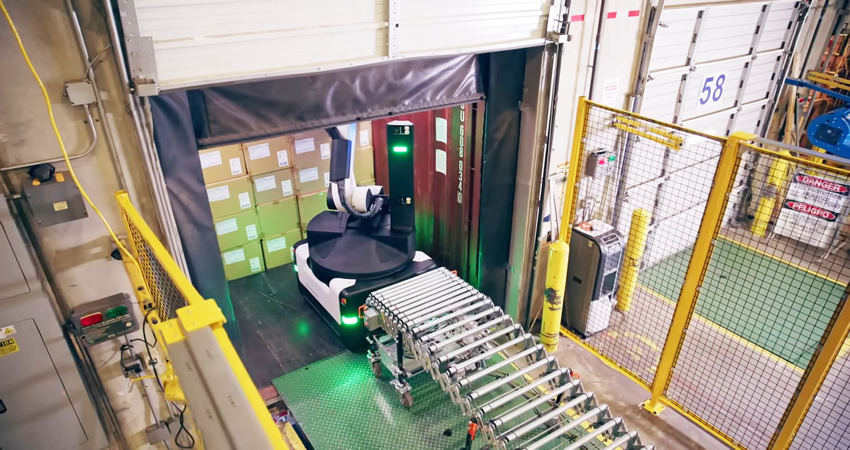
Automated Guided Vehicles (AGVs)
In warehousing, there are different types of mechanized guided vehicles. Let’s discuss a few and explain their functions briefly.
Towing AGV’s
Towing AGV mechanisms will allow you to pull carts, materials, or pallets to a designated area in a warehouse. The vehicles have a map of the warehouse programmed into them.
They utilize this map to navigate the facility and move products. These vehicles can accurately move products to designated areas in the warehouse. As long as nothing changes in the warehouse. They offer good accuracy for the functions that they perform.
Customized AGV Solutions
These automated guided vehicles offer highly customized areas to meet your warehousing requirements. Customizable machines can move irregular and unique-shaped objects of any size in your automated warehouse systems.
Unit Load AGV
The AGV function supports the warehouse by moving complete pallets. They can also be used to move complete racks as well as unitized loads.
They often have a clamping system with forks and loaders. This automated warehouse solution works by moving entire loads of goods.
Tugger AGV’s
Tugger AGV’s systems have the advantage of pulling strings of carts. The carts have a variety of goods stacked on them. Using them for transporting goods in a warehouse is ideal. They can be used in high or low areas in the warehouse.
Hybrid AGV’s
This is another customized solution. It allows you to combine many components for your automated warehouse solution.
You can combine a forklift and a carrier in an automated vehicle. This vehicle can lift and transport products using a transfer belt. You can choose the destination in the warehouse.
Guided Fork AGV’s
Guided fork AGV systems enable you to lift and transport items. This method has a fork. It is used in automated warehouses.
The regular fork picking and lifting system has a main difference as this system can be altered to your needs. This solution can be fully programmed to suit your requirements. They can reduce errors in the warehouse solution.
Assembly Line AGV
An automated guided vehicle on the assembly line synchronizes with other vehicles. It moves goods to different areas or workstations in the warehouse.
Automated vehicle guide systems can improve and streamline your warehouse capabilities. Choosing the correct AVG systems depends on the warehouse layout
. It also depends on the type of goods requiring transportation. Additionally, it depends on the material handling capabilities of your warehouse.
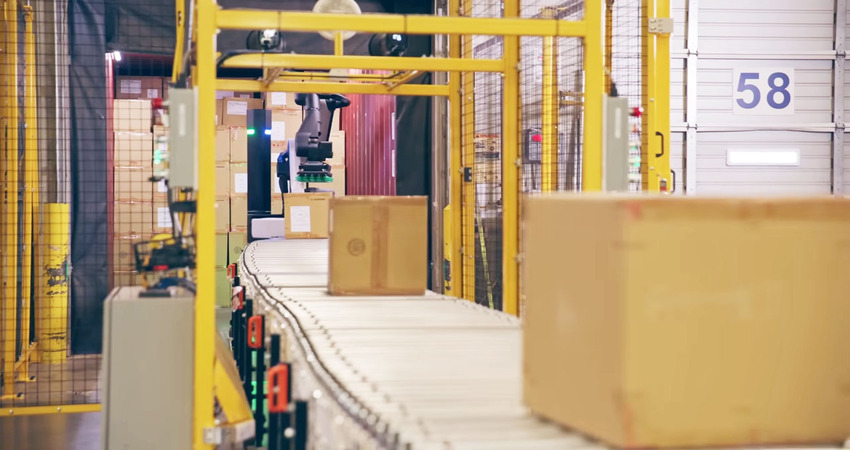
Automated Material Handling Equipment (MHE)
Below we will discuss warehouse automation and its key elements with automated material handling equipment in mind.
Item To Person Systems
A robot can transport items or goods to a designated area. This is possible with this classification of facility. In the past, employees used to do this task.
Now, a Robot will do it instead. The solution has greatly improved automated warehouses. In many situations, these item-to-person systems operate without much human intervention.
This system is mainly used in manufacturing warehouses, e-commerce warehouses, and industrial warehouses.
Automated Conveyor Merge and Diverter Systems
We will now discuss automated mover merge and diverge systems. There are a few variations to the makeup of this system so we will outline this below:
Sortation Transporter
These solutions present the flexibility of sorting items on an automated transportation system. They have the capability of gathering merchandise from various carrier lines.
They can process these goods based on size, dimensions, and weight. They then divert the sorted merchandise to specific chutes.
The sorted items are also sent to single-flow carriers for arrival. The backend of these solutions is program-based and highly customizable.
Popup Or Erectable Wheel Diverters
These diverters often utilize wheels or diverters to route items or goods. They send them to different transfer mechanisms or chutes based on where they need to go. This is for further handling, packaging, and processing.
Material Diverter
The general functions of these divertors are to push items. They can push items in primary, secondary, and tertiary carriers.
The utilization of mechanical arms enhances the capability of the material diverter. These are typically used in settings that need consistent accuracy and speed. They process products accordingly.
Swivel Wheel Transporter
The application of wheels is essential in this system. The primary function is to move inventory to designated areas.
Transfer Cars
The warehouse functions can move transporter sections to different locations.
Cooperative Robots (Cobots)
This classification of robotic warehouse systems collaborates with employees. It focuses on pre-determined tasks or required outputs in the warehouse. These solutions would work together with humans in a shared space.
They would fulfill the required function. These designs focus on safety and security in shared collaboration spaces. Employees will use them. These solutions give versatility. They also present safety and speed limitations.
Additionally, they have force limitations and simple programming capabilities. Lastly, they supply efficiency. They are also often deployed to reduce downtime in a warehouse function.
Robotic Stretch Wrappers
The function model automates product encasing, eliminating human intervention in warehouses. This model of packaging has a function. It enables speed and efficiency in wrapping merchandise.
The purpose is to keep products safe. These solutions can automate packaging in many ways. They enable cost-effective product packaging. Programming options determine how to wrap products based on their dimensions.
The wrapping can vary based on product sizes and dimensions. This enables the business to reduce the waste of wrapping materials. There are different types of stretch wrappers available. These include pallet-wrapping robots, stretch-wrapping robots, and autonomous wrappers.
Automated Labeling and Printing Systems
The labeling system is known as a label applicator or printing applicator. It improves the process of labeling and printing in warehouses. These applications use advanced software.
The software integrates with the printing or labeling system. You can print many labels for merchandise and goods. The labels are printed as required by your warehouse.
These types of systems often have key features and components. These include integrated printing hardware, labeling software, and database integration.
The applications can access real-time information on products, catch codes, and more. They also have material labels and a label applicator. You can use various types of label applicators for different purposes. The three most common types are pressure-sensitive, blow-on, and tamp-label applicators.
Data Management And Software Systems Commonly Used In A Warehouse
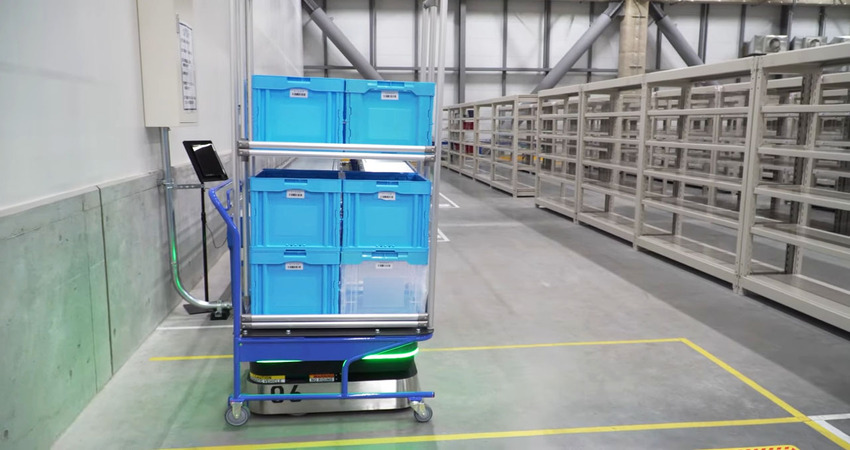
Warehouse management systems (WMS) are optimized systems. They can manage various features within a warehouse. These systems are usually software or application-based.
They can improve a warehouse’s functionality and efficiency. They offer a facility that helps you manage inventory efficiently. They also assist with order processing, fulfillment, and disbursement for customers.
These logistics management systems are designed to optimize warehouse efficiency.
Types Of Warehouse Management Systems
There are many types of stock management systems (WMS). We will focus on a few common types found in warehouses.
Independent or Standalone Warehouse Management System
The applications or solutions enable the warehouse to manage specific functions independently. The applications or solutions also optimize functions related to warehousing.
Standalone systems are not integrated with other warehouse facilities. In the bigger picture, they are part of other systems. They primarily offer warehouse-related tasks.
ERP (Enterprise Resource Planning) Embedded Warehouse Management System
Most companies with warehouses use an enterprise resource system to operate them effectively. These solutions are flexible. They can often be incorporated with other systems in the warehouse.
The solution mentioned above allows smooth data flow within the warehouse. It also transfers this information to important areas within a company.
These areas include finance, procurement, logistics, and manufacturing departments. This allows for quick and efficient gathering and sharing of information. This solution greatly improves warehouse functionality. It provides data to enhance operational effectiveness.
Cloud Based WMS (Warehouse Management System)
Currently, technology has made major advancements with a direct impact on warehouse advancement. We can assume that future warehouses will operate with little human involvement. Furthermore, staff will be minimized. With the reduction in human staff, solutions are to be less error-prone.
Cloud-based warehouse solutions are solutions that are harbored in the cloud. The cloud is an internet-based space that is accessible from anywhere.
It is a secure platform and can be accessed using a browser or software application. These frameworks are commonly used for warehouse automation. They provide flexibility, viability, and cost-effectiveness for managing warehouses. It can often be construed as a cloud-based management solution for a warehouse.
If you choose this framework, you can have a cost-efficient and flexible solution. It allows you to access your warehouse from anywhere and reduces your costs.
Open Source WMS (Warehouse Management Systems)
Open-source software or applications are programming codes that you can get for free. You can manipulate them according to your requirements. To create a program or application, you need a high level of coding and programming knowledge.
Open-source applications can save you money. Yet, they lack certain solutions found in other WMS. If you don’t have the time and resources to build on the source code, it’s better to buy an off-the-shelf WMS.
3PL WMS (Third Party Logistics Warehouse Management System)
A third-party logistics WMS provides a complex warehouse management solution (WMS). It caters to the specific needs of third-party warehouse providers.
Generally, they use traditional warehouse functions. They customize the function to fit 3PL enterprise needs. Due to rapid advancement in technology, they will also take advantage of artificial intelligence, computerized warehouse robots, and warehouse automation solutions.
E-Commerce Warehouse Automation System Solution
The above specification is designed specifically to meet the needs of e-commerce businesses or stores. These solutions offer several key benefits. They optimize order processing and inventory management in real time. They offer greater value to your supply chain function
They also provide multi-phase support and handle fulfillment and returns. Additionally, they forecast inventory by analyzing retrieved data. shipping carrier integration and offering easy scalability for businesses that need expansion.
Conclusion
As you read the above post should give you a better understanding of warehouse automation. The post aimed to educate you on the various warehouse automation systems and we hope that you now understand the many elements that warehouse automation is comprised of.
If you enjoyed the post please check out some of our other articles below:-
The Best Shoes For Warehouse Work
Warehouse Organisation Tips And Tricks
What are the benefits of Warehouse Automation?
The benefits of warehouse automation include increased efficiency, higher accuracy, reduced labor costs, improved inventory management, faster order fulfillment, and enhanced overall operational productivity.
What is AVG in a warehouse?
AGV stands for Automated Guided Vehicle, a mobile robot used in warehouses to transport goods autonomously, following predetermined paths or routes.
Do Amazon warehouses use robots?
es, Amazon uses robots in its warehouses for tasks such as picking, packing, and transporting goods.
What is an example of warehouse automation?
An example of warehouse automation is robotic systems for order picking, where robots navigate through aisles to locate and retrieve items, streamlining the fulfillment process.
What is ASRS in a warehouse?
ASRS stands for Automated Storage and Retrieval System. In a warehouse, ASRS refers to a computer-controlled system that automates the placement and retrieval of goods from designated storage locations. It typically involves the use of robots or automated mechanisms to manage and optimize inventory handling processes